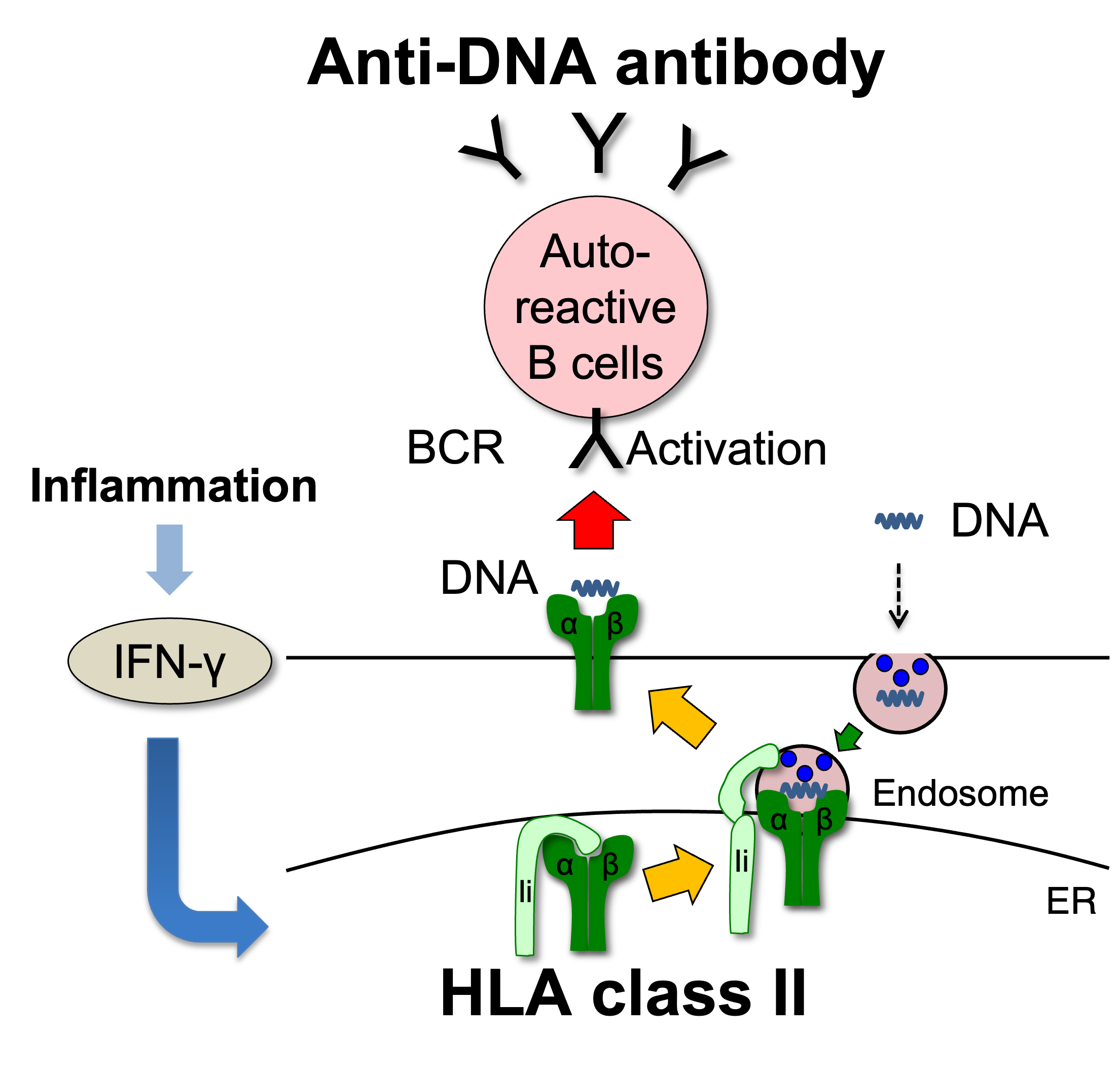New Pathogenic Mechanism of Systemic Lupus Erythematosus (Arase Lab, in Arthritis and Rheumatology)
A research group led by Professor Hisashi Arase of the Research Institute for Microbial Diseases, Immunology Frontier Research Center, and Center for Education and Research on Infectious Diseases, Osaka University, together with Kyoto University, Kobe Central City Hospital, and RIKEN, has elucidated a new pathogenic mechanism of systemic lupus erythematosus.
Although it has been known that a specific HLA class II allele (*1) is associated with the risk of systemic lupus erythematosus, the functional role of HLA class II molecules in the production of anti-DNA antibodies has remained unclear. We have previously shown that HLA class II molecules present not only peptides but also misfolded proteins and are involved in the production of autoantibodies in various autoimmune diseases. In this study, we have revealed for the first time that DNA binds to the peptide binding pocket of HLA class II molecules and could be involved in the production of anti-DNA antibodies.
From the analyses of HLA class II transfected cells, we demonstrated that DNA is presented on HLA class II molecules, which have been thought to present only peptides. In particular, DNA was found to bind significantly more strongly to HLA class II molecules with the systemic lupus erythematosus-risk allele than to the resistant allele. In addition, the binding of DNA to HLA class II molecules was inhibited by high-affinity peptides, indicating that DNA binds to the peptide-binding pocked of HLA class II molecules. Furthermore, analysis using GFP-reporter cells expressing anti-DNA antibodies as B cell receptors revealed that DNA bound to HLA class II transduces activating signals through the anti-DNA B cell receptor. These results suggest that DNA presented on HLA class II molecules could be involved in the production of anti-DNA antibodies in systemic lupus erythematosus.
The results of this study were published in Arthritis and Rheumatology, Volume 74, Issue 1 2022.
Title: Anti-dsDNA antibodies recognize DNA presented on HLA class II molecules of systemic lupus erythematosus risk alleles
Authors: Hideaki Tsuji, Koichiro Ohmura*, Hui Jin, Ryota Naito, Noriko Arase, Masako Kohyama, Tadahiro Suenaga, Shuhei Sakakibara, Yuta Kochi, Yukinori Okada, Kazuhiko Yamamoto, Hitoshi Kikutani, Akio Morinobu, Tsuneyo Mimori, Hisashi Arase*
* Corresponding author
http://dx.doi.org/10.1002/art.41897
*1 HLA (human leukocyte antigen)
In humans, HLA is synonymous with major histocompatibility complex (MHC). There are two types of molecules, HLA class I and HLA class II. HLA class I molecules are expressed on all cells except red blood cells, while HLA class II molecules are expressed on the surface of specific immune cells. Both HLA class I and class II are involved in antigen presentation to T cells. HLA class II molecules have been considered to present peptide antigens incorporated from outside of cells.
Links
- Home
- Achievement
- Research Activities
- New Pathogenic Mechanism of Systemic Lupus Erythematosus (Arase Lab, in Arthritis and Rheumatology)








